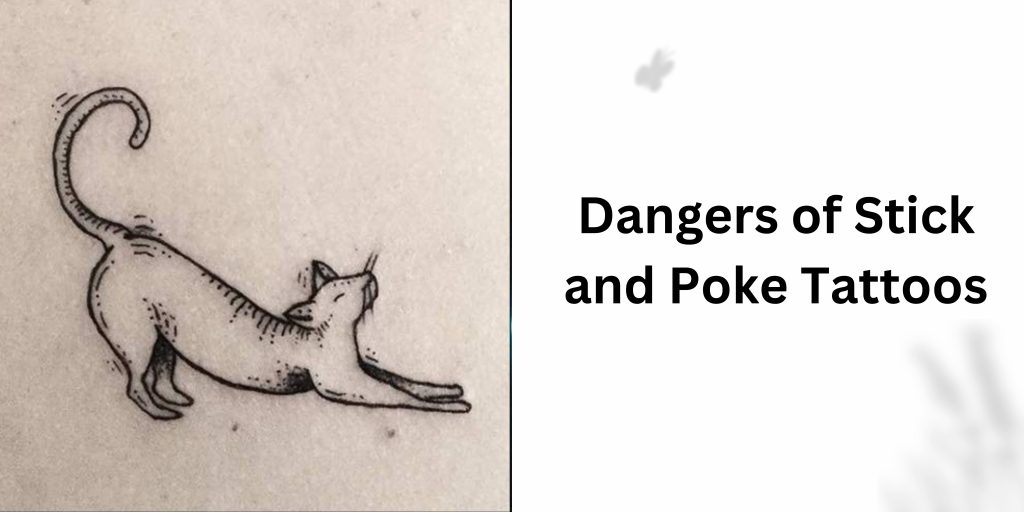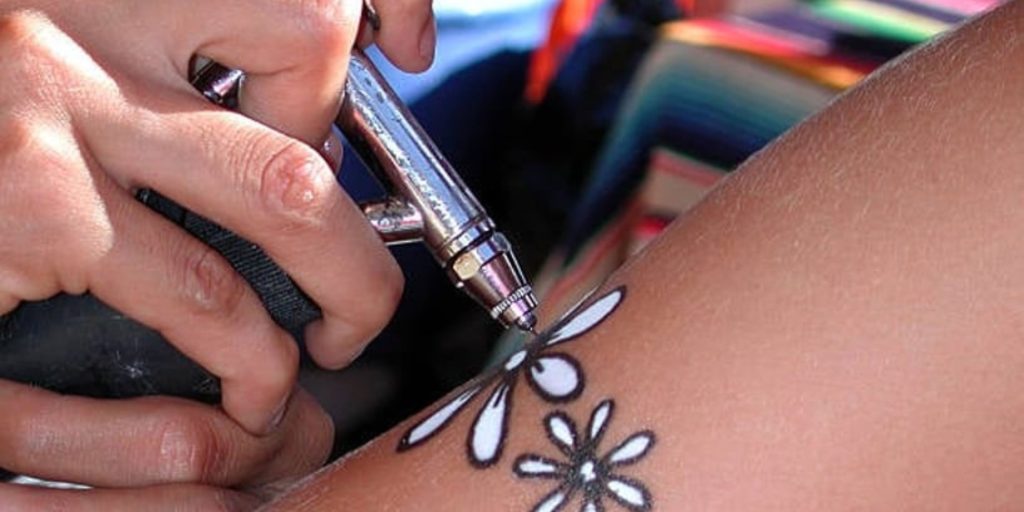Spine tattoos have gained immense popularity in recent years, captivating the imaginations of those seeking unique and meaningful body art. However, beneath the allure of spine tattoos lies a series of potential risks and concerns that deserve careful consideration. In this article, we will delve deep into the world of spine tattoos, exploring the intricate tattooing process, debunking myths, and addressing the crucial question: can a spine tattoo paralyze you?
The Tattooing Process
Consultation and Design
The journey of getting a spine tattoo begins with a crucial step: the consultation with your chosen tattoo artist. During this phase, you’ll discuss your design ideas, size, placement, and any concerns you may have. Remember, communication is key in ensuring your tattoo turns out just as you envisioned.
Choosing the Right Tattoo Artist
Selecting a skilled and reputable tattoo artist is paramount. Their experience and expertise will greatly influence the outcome of your spine tattoo. Research thoroughly, read reviews, and ask for recommendations from friends who have had successful experiences.
Pain and Discomfort During the Procedure
Tattooing can be painful, and spine tattoos are no exception. The spine is a sensitive area due to its proximity to bone and nerves. It’s important to prepare mentally for the discomfort you may experience during the tattooing process. Your tattoo artist will do their best to make you as comfortable as possible.
Read More: Cost of spine tattoo
Nerve Pathways and Spinal Cord

Explanation of the Nervous System’s Role
Understanding the body’s nervous system is crucial when considering spine tattoos. The nervous system is responsible for transmitting signals throughout your body, including the sensations of pain and touch. Nerves are intricately connected to the spine.
How Nerves Are Distributed Along the Spine
Nerves run along the entire length of your spine, branching out to different parts of your body. This complex network is what allows you to feel sensations and move. Tattooing near these nerves raises concerns about potential complications.
The Spinal Cord’s Crucial Function in Transmitting Signals
The spinal cord serves as a vital pathway for signals between your brain and the rest of your body. It controls various functions, including muscle movements and reflexes. Any interference with the spinal cord can have serious consequences.
Read More: Can tattoos cause blood clots?
Can Spine Tattoos Paralyze You?
Addressing Common Misconceptions
There are several misconceptions surrounding spine tattoos, with one of the most prominent being the fear of paralysis. We’ll address these misconceptions and separate fact from fiction.
Exploring the Potential Risks Associated with Spine Tattoos
While paralysis is a rare outcome, it’s essential to acknowledge the potential risks associated with spine tattoos. These risks include infection, nerve damage, and improper healing.
Case Studies and Real-Life Examples of Complications
To shed light on the real-world implications of spine tattoos, we’ll delve into case studies and share stories of individuals who have faced complications. These accounts serve as cautionary tales and highlight the importance of making informed decisions.
7 Factors Determining the Amount of Pain You Will Feel

Pain Threshold
Your pain threshold, often referred to as pain tolerance, is a fundamental factor in how you perceive pain. It’s the point at which you start to feel pain or discomfort. Some individuals naturally have a higher pain threshold, meaning they can endure more discomfort before it becomes unbearable, while others have a lower threshold and may experience pain more intensely.
Emotional State
Your emotional state can significantly impact your pain perception. Anxiety, stress, fear, or even excitement can heighten your perception of pain. Conversely, positive emotions like happiness or relaxation can help reduce the perceived intensity of pain. This emotional aspect of pain is why a soothing and comforting environment can make medical procedures feel less painful.
Pain Type
The type of pain you’re experiencing also plays a role in how you perceive it. There are two primary categories of pain: acute and chronic. Acute pain is typically sharp and short-lived, while chronic pain persists over an extended period. Chronic pain can be more emotionally taxing and may lead to increased pain perception due to its ongoing nature.
Location of Pain
Where the pain is located in your body matters. Certain areas are more sensitive than others. For example, the face, fingers, and genitals tend to have a higher density of nerve endings, making pain in these areas feel more intense. Conversely, areas with thicker skin or less nerve density may experience less intense pain.
Nervous System Sensitivity
Individual variations in nervous system sensitivity can influence pain perception. Some people may have a heightened sensitivity to pain signals, making them more prone to experiencing intense pain even with minor stimuli. Others may have a less reactive nervous system and perceive pain less intensely.
Pain Management Techniques
The pain management techniques you employ can significantly affect your pain perception. Techniques such as deep breathing, relaxation, meditation, and distraction can help alleviate pain and make it more manageable. Conversely, neglecting pain management strategies can lead to heightened pain perception.
Cultural and Societal Factors
Cultural and societal factors can also influence how you perceive pain. Some cultures may encourage stoicism and downplay pain, while others may openly express discomfort. Social support and the cultural acceptance of pain expression can impact your own perception of pain. Additionally, cultural beliefs about the causes of pain and the importance of seeking medical care can shape your response to pain.
Read More: Cost Of Tapout Tattoo Session and Benefits
Pros & Cons of Spine Tattoo
Pros of Spine Tattoos
Aesthetic Appeal:
Spine tattoos have an inherently elegant and graceful quality that enhances the natural curves of the spine. They can be visually stunning and provide a striking visual effect.
Personal Significance:
Many individuals choose spine tattoos for their deep personal significance. The spine represents strength, resilience, and support, making it a powerful symbol for many.
Versatile Design Options:
Spine tattoos offer a long, vertical canvas, allowing for a wide range of creative and intricate designs. This flexibility enables you to express your individuality.
Privacy and Discretion:
Spine tattoos can be easily concealed when desired, making them suitable for professional environments. You can choose when to display your tattoo.
Minimal Interference:
Spine tattoos typically have minimal interference with everyday activities, unlike tattoos on joints or hands.
Cons of Spine Tattoos
Pain and Discomfort:
The spine is a sensitive area with minimal cushioning. Tattooing over bone can be significantly more painful, and the discomfort level can vary from person to person.
Healing Challenges:
Spine tattoos can be prone to complications during the healing process, including infection and scarring. Proper aftercare is crucial.
Potential for Nerve Damage:
The spine houses a complex network of nerves, and tattooing near them carries a risk of nerve damage. While rare, this risk should be considered.
Limited Tattoo Size:
The narrow and curved nature of the spine restricts the size of tattoos that can be comfortably placed in this area. Intricate designs may require multiple sessions.
Cost and Time:
Spine tattoos may be more expensive due to the skill required to work on this delicate area. Additionally, they can take longer to complete, increasing the overall cost.
Not Ideal for Everyone:
Spine tattoos are typically not recommended for individuals getting their first tattoo. The pain and potential complications may be overwhelming for newcomers.
Risk of Regret:
As with any tattoo, a spine tattoo is a permanent commitment. It’s essential to be certain of your design choice and its significance.
Read More: how much pain you feel during tattoo
6 Ways to Reduce Spine Tattoo Pain

Numbing Creams or Gels
Numbing creams or gels, also known as topical anaesthetics, can be applied to the skin before the tattooing process begins. These products contain active ingredients that temporarily numb the area, reducing the sensation of pain. It’s essential to discuss the use of numbing agents with your tattoo artist beforehand to ensure they are comfortable with this approach. Keep in mind that numbing creams may not completely eliminate pain but can significantly reduce it.
Pain Relief Medications
Over-the-counter pain relief medications, such as ibuprofen or acetaminophen, can help manage pain during and after the tattooing process. It’s advisable to consult with your tattoo artist and a healthcare professional before taking any medications to ensure they are safe and won’t interact with the tattooing process or aftercare.
Deep Breathing and Relaxation Techniques
Practising deep breathing and relaxation techniques can help you manage pain and anxiety during the tattooing process. Focus on slow, deep breaths and try to stay as relaxed as possible. Tension in your muscles can intensify pain, so maintaining a calm and composed demeanour can be beneficial.
Distraction Techniques
Distraction can be a powerful tool for reducing pain perception. Consider bringing headphones and listening to calming music or an audiobook during the tattooing session. Engaging your mind with something other than the pain can help divert your attention and make the experience more bearable.
Breaks and Communication
Don’t hesitate to communicate with your tattoo artist during the session. If you’re experiencing too much pain or discomfort, ask for short breaks to rest and gather your composure. Experienced tattoo artists understand the importance of their clients’ comfort and will work with you to ensure a tolerable experience.
Proper Aftercare
Pain doesn’t end when the tattooing session is over. The healing process can also be uncomfortable, so proper aftercare is crucial. Follow your tattoo artist’s aftercare instructions diligently, which may include applying ointments, keeping the tattoo clean, and avoiding activities that could irritate the tattooed area. Proper aftercare can help minimize pain and reduce the risk of complications
Can a Spine Tattoo Paralyze You Conclusion
the allure of spine tattoos is undeniable, but the potential risks should not be underestimated. By exploring the tattooing process, debunking myths, and seeking expert opinions, this article aims to provide you with the knowledge needed to make an informed decision about whether a spine tattoo is right for you. Remember, while paralysis is a rare outcome, it’s essential to prioritize your safety and well-being throughout the tattoo







